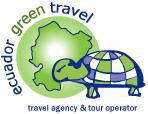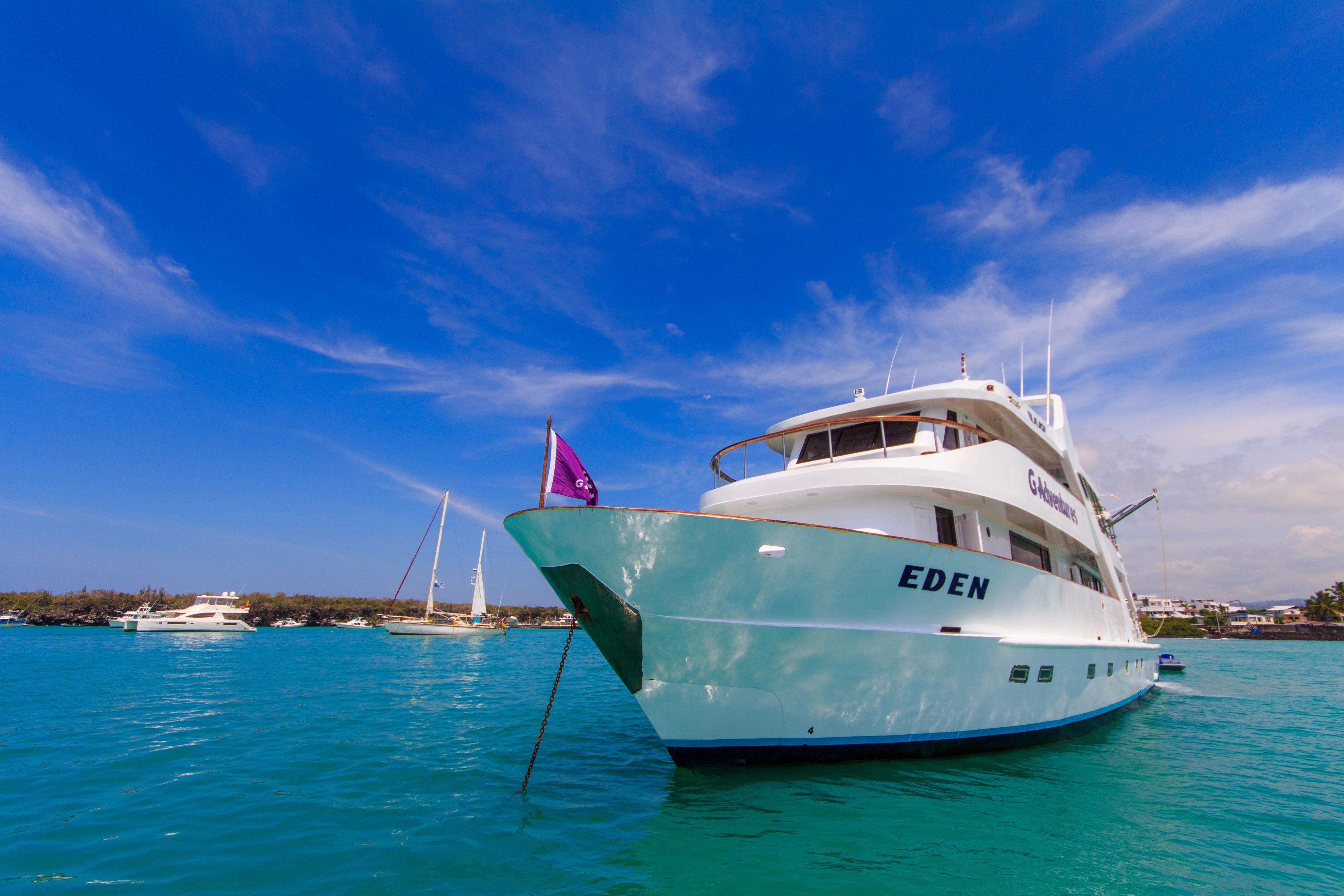DAY 1: FRIDAY
AM: ARRIVAL AT BALTRA AIRPORT
Arrival at Baltra Airport and transfer in. You must pay your Galapagos National Park entrance fee (unless it was pre-paid) and your luggage will be inspected. One of our guides will meet you, help you collect your luggage, and escort you on a short bus ride to the harbour. Here you will climb aboard the yacht. After greeting the crew and the captain, your cabins will be assigned to you and then you will enjoy your first lunch aboard.
PM: PINNACLE ROCK, BARTHOLOMEW
The beautiful volcanic islet of Bartolomé is among the youngest of the islands and, on a geological scale, was just recently born out of the fire. Although it looks deserted at first sight, Bartholomew offers some of the wildest landscapes and best panoramas of the entire archipelago. To enjoy the postcard view of the idyllic “Pinnacle Bay” you will have to climb the stairs to the viewpoint on top of the island (114 m/375 ft).
Enter a dramatic world of threatening (though extinguished) nearby spatter cones, craters, and lightweight lava droplets that have been spewed out by fiery fountains. The summit trail is also ideal for witnessing how scanty pioneer vegetation, such as lava cactus, struggles to take root in the bare virgin lava fields.

DAY 2: SATURDAY
AM: DARWIN BAY (GENOVESA)
As one of the outer islands and most exclusive places on the Galapagos, Genovesa is well worth last night’s longer navigation.
This compact site in the heart of its flooded crater shows the extremely varied coastal ecosystems of the Galapagos in miniature; nearly too much for a single day. Whimbrels and wandering tattlers forage actively along the surf, next to resting Galapagos sea lions. Impressive frigatebirds and red-footed
boobies nest in the mangroves, where you can also see vocalists such as the yellow warbler, Darwin’s finches and the Galapagos mocking- bird. Uniquely, two subpopulations of the same species of large cactus finch differ in their singing
PM: PRINCE PHILIP'S STEPS (GENOVESA)
Not only because of its historical English name (Tower) Genovesa has a royal touch. Follow in the footsteps of Prince Philip – Galapagos lover for many years – and visit this favourite birding spot with the largest breeding colonies of red-footed and Nazca boobies, and look for the remarkable short-eared owl that hunts on foot!

DAY 3: SUNDAY
AM: SOUTH PLAZA
Popular South Plaza is not to be missed! This bizarre ‘Jurassic islet’ is the best place to see the emblematic ‘Galapagos dragons’, which crawl across it.
Return on board.
PM: SANTA FE ISLAND
During your excursion at Santa Fe island, you will get surprised at how close to you some curious sea lions waddle. Likewise approachable for a close-up are Galapagos hawks that usually perch at their outlooks, ready to snatch away a baby marine iguana or lava lizard.
We start next a cactus forest trail, that gives a close-up view on how these surrealistic, house-high giant opuntia prickly pears have grown out larger than on any other island and tell a fascinating evolutional story.
At the calm, turquoise Barrington Bay, you can swim in close company with Galapagos sea lions, fluorescent blue chin parrot fishes, yellowtail surgeon fishes, whiptail stingrays, Pacific green turtles, whitetip reef sharks, and more.

DAY 4: MONDAY
AM : CHARLES DARWIN CENTER (SANTA CRUZ)
The dinghies will bring you to the touristic pier of Puerto Ayora, in Santa Cruz island, from where you will be brought to the Charles Darwin Research Station. This institution was named after the British naturalist who developed his Theory of Evolution after visiting these islands in 1835, and works on the conservation and restoration of the Galapagos ecosystems, as well as for the sustainable development of its communities.
There is an interpretation centre about the National Park and its Marine Reserve. The most memorable part of your visit will probably be the successful breeding centre and the enclosures with Galapagos giant tortoises.
PM: TORTUGA BAY
Tortuga Bay, which is a beautiful, gigantic, perfectly preserved white sand beach, ranked as one of the world’s most beautiful by Condé Nast
magazine. It is named after the fact that it is a favorite nesting site for the black turtle and marine iguana.
Swimming in the first, large beach is NOT recommended although experienced local surfers ride its waves and make it seem easy. It is great for birdwatching and sunbathing for some Vitamin D. If you want to enter the sea, the second recreational beach further along the way is a better idea.
It holds a sheltered bay surrounded by evergreen red mangroves. Its tranquil waters are an excellent place to cool down and snorkel.
Return on board for a welcome toast and dinner.

DAY 5 - TUESDAY
AM - MOSQUERA (LAND VISIT)
Galapagos sea lions are true beach lovers and Mosquera offers beautiful white coral sand beaches, which contrast with the blue water and thus attract numerous sea lions.
During a beach walk, you can observe numerous species of waders and sanderlings. Between the rocks, the red clip crabs wait to play hide and seek while you try to get the perfect photo. If you are lucky, you may even encounter yellow-crowned night-herons or even a red-footed booby.

Transfer to Baltra Airport





















